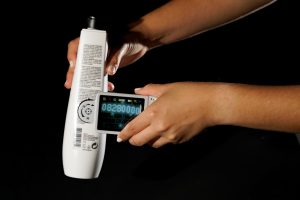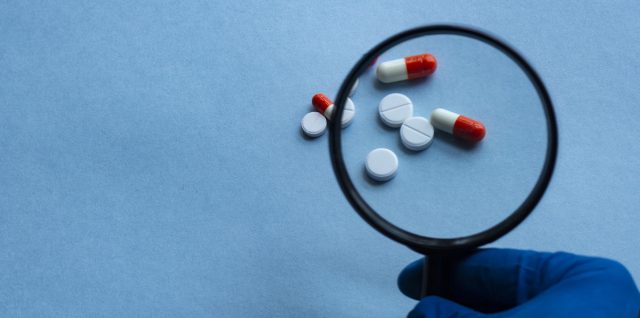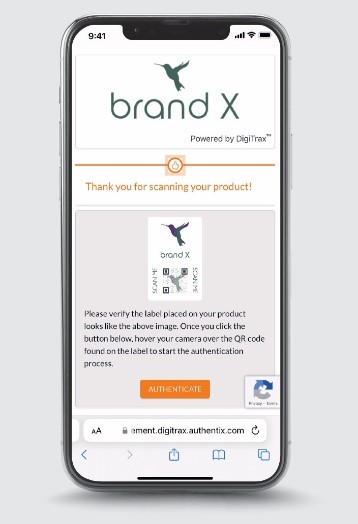Part 2 of our series of topics from Your Complete Brand Protection Guide by Authentix. Our guide helps brands develop holistic and secure brand protection strategies and solutions that safeguard their company, products, customers, and revenue.
Infringement and illicit trade can create a web of negative impacts that harm brands and their customers, often jeopardizing the consumer experience when customers unknowingly purchase a product that proves to be falsified. Fake products result in economic harm to businesses through decreased revenue and increased warranty or return claim reimbursements. They also degrade the brand’s reputation, leading to a loss of consumer trust.
The effects stretch beyond financial loss, often posing environmental risks and endangering public health and safety with hazardous products. In addition to the potential risk of harm to consumers, legal and liability issues can arise. Add to the mix potential phishing scams, fake online product listings and social media accounts, etc., and there are many risks for brands and consumers when illicit trade happens.
Anti-counterfeiting features that authenticate products are both overt and covert and can be applied in numerous ways including in product, on product in the form of labels and closure seals, on cartons where containers of products are stored, into plastic parts of individual packaging, and even onto metal and glass components of packaging. Each feature serves a unique purpose. Covert or invisible markings enable trained inspectors to quickly authenticate genuine products in the supply chain, identify the source of diversion or determine other illicit activities. There are also overt features that allow the end consumer to verify the authenticity of their purchased product. When combined with careful design and production quality controls in authentic product manufacturing, these features raise the bar of complexity for counterfeiters and make the product a less attractive target and far less vulnerable.
Overt Security: Visible security features are valuable in product authentication. Visible to the naked eye or felt via touch, this category includes holograms, color-shifting inks, and security threads that are difficult to reproduce or copy. Other examples include microtext, thermographic ink and even micro-optics (the blue lenticular strip found on the current U.S. $100 bill).

Although visible security features are a starting point, counterfeiters are creative. Even if a visible authentication feature is hard to recreate perfectly, a counterfeiter with the right tools and illegal intent only needs to copy it closely enough to confuse a consumer who just gives a package a quick glance. Additional measures create layers of security – making it more difficult, even impossible in some cases, to copy or duplicate security features.
Covert Security: High-security covert features can be embedded into labels, closure seals, or other features of product packaging. Although these covert markers are invisible to the naked eye, they can be found and measured with specialized handheld instruments using proprietary optics and detection algorithms for rapid, secure field authentication. Additional forensic layers of security can be embedded into materials and confirmed through more extensive laboratory analysis for evidence to further prosecute profiteers.
Semi-Covert Security: As the name suggests, these are features that might not be noticed until someone closely examines the product or package.
Forensic Security: Forensic analysis involves laboratory testing of products via an embedded component or molecule added to a substrate or solution to determine authenticity. Unique product elements are examined so brand owners can generate compelling evidence of counterfeiting for legal proceedings. However, the ability to trace a product back to its origin is not supported unless a unique hidden tracing element is added to the product.
Case Study: Pharmaceuticals

The Challenge
Counterfeit copies of a major pharmaceutical brand were turning up in the U.S. market, but the brand had no security measures in place to allow patients or inspectors to tell real products from the fake. Consequently, $1 billion worth of product, already in the distribution pipeline, could not be sold until a method of allowing patients and retailers to verify that the medicine is authentic could be implemented.
The Solution
The customer’s product was repackaged to include a variety of authentication features that could be identified by patients and inspectors, both in the field and in the laboratory. These included:
- Overt, color-shifting inks readily distinguishable by patients
- Covert, machine-readable inks detected in the field by inspection staff with appropriate readers
- Forensic markers only detected under laboratory analysis
The Outcome
The Authentix solution to the customer’s counterfeiting problem provided a secure means of instantly differentiating authentic from counterfeit medicines. The benefits were immediate and significant:
- $1 billion worth of product frozen within the supply chain was released for sale
- The expense of a full product recall was averted
- The customer was able to mitigate the risk of potential lawsuits
- Most importantly, confidence in the brand was restored among physicians, pharmacists and patients
Learn more: https://authentix.com/pharmaceutical-case-study/
Chemical and Physical Markers: These can be hidden from consumers and counterfeiters and can only be seen with specific detectors that are calibrated to a specific wavelength to verify authenticity.
Tamper Evident Packaging: These are labels, stickers, or seals that, when opened or tampered with, provide immediate evidence that the product has been compromised.
Serialization: In the serialization process, a company applies individual unique codes and/or signatures at the point of manufacture (giving each product an identifiable attribute) and defines scanning locations where retrieval and association of the unit can be linked to the scanning transaction.
These transactions uniquely capture, track, and store data from those markings in a managed database that allows authorized personnel to monitor the product journey by unit or larger groups. Most are familiar with this process as it applies to shipping a package overnight where it is tracked online until it reaches its destination.

Digital QR Codes: Products can be scanned and authenticated without the need for an app, using a smartphone camera that can then further engage consumers by directing them to other webpages where they can register their warranty, learn more about the product, and even suggest other complementary products. As the product travels through the supply chain, the unique number or symbol can be collected in the database and added to its history.
This information is available to a credentialed user via a mobile app or localized database. In a track and trace system, for instance, the information flow can be bi-directional, so the collection of the symbol, the scanning event and the unique call to the database can be recorded and appended to the product record for verification purposes.
Online Brand Protection: The rise in online sales has been unfortunately accompanied by the rise in counterfeiting on online marketplaces, social media platforms, and websites. As mentioned earlier in this guide, online brand protection tools include keyword monitoring, logo detection, image matching, and the use of advanced brand protection technology like Artificial Intelligence (AI) and Machine Learning. Online brand protection allows your company to easily scan webpages and marketplaces, social media platforms, e-commerce apps, messaging apps like WeChat, payment sites, and the dark web for infringing content and listings and get them taken down.
For a more complete guide to brand protection- why it is necessary, how infringement harms brands and customers, how to develop and implement an effective program, and insights into the brand protection strategies of the future – download our Complete Brand Protection Guide.
About Authentix
As the authority in authentication solutions, Authentix can help brands create a customized plan to tackle counterfeit products from every angle, collect actionable data, and protect brands and consumers. Authentix works with each company to determine which brand protection solutions are right for their situation.
Authentix brings enhanced visibility and traceability to today’s complex global supply chains. For over 25 years, Authentix has provided clients with physical and software-enabled solutions to detect, mitigate, and prevent counterfeiting and other illicit trading activity for currency, excise taxable goods, and branded consumer products. Through a proven partnership model and sector expertise, clients experience custom solution design, rapid implementation, consumer engagement, and complete program management to ensure product safety, revenue protection, and consumer trust for the best known global brands on the market. Headquartered in Addison, Texas USA, Authentix, Inc. has offices in North America, Europe, Middle East, Asia, and Africa serving clients worldwide.
